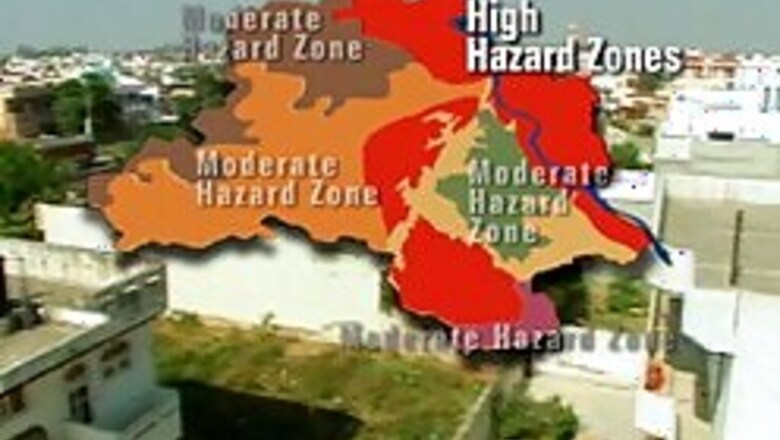
views
New Delhi: Scientists use two methods to determine the size of an earthquake — Magnitude and intensity. Here is a lowdown on how both are measured. (Source: US Geological Survey)
Magnitude is the amount of energy released, measured by an instrument called the seismograph. It can also be measured by the Richter scale, developed by Charles Richter in the 1930s.
AVG NO. PER YEAR
Great
8 and higher
1
Major
7 to 7.9
17
Strong
6 to 6.9
134
Moderate
5 to 5.9
1,319
Light
4 to 4.9
13,000 (estimate)
Minor
3 to 3.9
130,000 (estimate)
Very Minor
2 to 2.9
1.3 million(estimate)
Intensity is a degree to which a quake damages people, structures and terrain and is a subjective measurement based on observation. Intensity is pegged to a specific location — intensity levels from the same quake will vary, usually lower for areas farther from the epicentre
I-II
Not felt, or felt only by a few peple, usually on the upper floors of buildings
III
Felt quite noiticably by people indoors, similar to the vibrations of a passing truck.
IV
Felt indoors by many, outdoors by a few. People can be awakened at night. Dishes, windows, doors disturbed. Vehicles rock noticably.
V
Felt by many. Everyone awakened if sleeping. Dishes, windows broken. Unstable objects overturned.
VI
Felt by all. Heavy furniture moved, fallen plaster.
VII
Damage negligible in buildings of good design and construction. Slight to moderate damage in well-built but ordinary structures, considerable damage in poorly designed structures. Usually broken chimneys.
VIII
Damage slight in specially designed buildings, considerable in ordinary, substantial structures — sometimes partially collapsing. Damage great in poorly designed structures. Usually broken chimneys. Monuments, walls and columns may collapse.
IX
Damage considerable in specially-designed structures. Well-designed frames thrown out of plumb. Damage great in substantial buildings. Buildings may shift off foundations.
X
Some well-built wooden structures destroyed. Most masonry and frame structures destroyed.
XI
Few, if any, masonry structures remain standing. Bridges destroyed. Rails bent greatly.
XII
Damage complete. Lines of sight and level distorted. Objects thrown into the air.




















Comments
0 comment